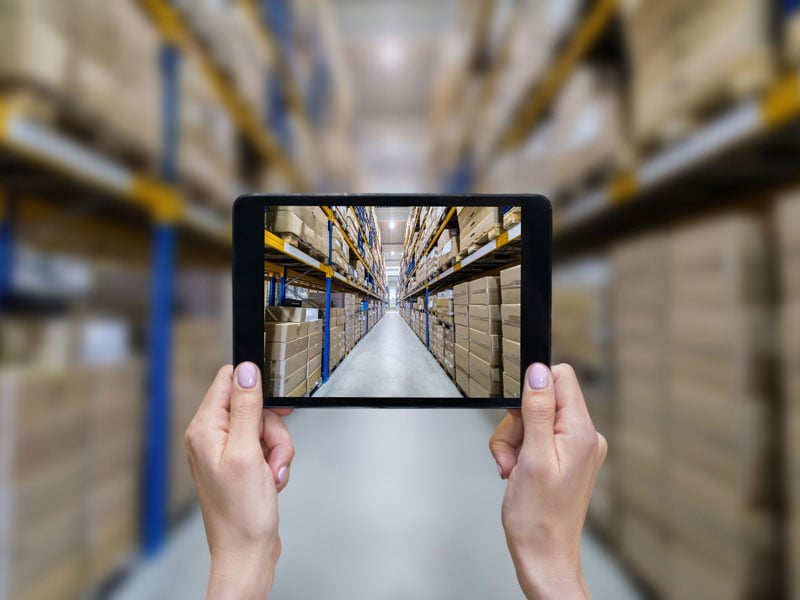Question: How can retailers use technology to transform the in-store retail experience?
Retailers are adopting more in-store technology to enhance the customer experience and optimize operations. They are deploying Internet of Things (IoT) devices to deliver smart experiences, ranging from mobile marketing with discounts and personalized offers, to smart shelves with digital signage, wayfinding, and self-checkout.
In addition, augmented reality and virtual reality (AR/VR) enable consumers to experience products in context, via simulations or smart dressing rooms. IoT applications offer so much opportunity that, according to a Microsoft IoT Signals report, 92% of retailers are deploying IoT devices in front- or back-end operations.
Retailers are also beginning to gather sophisticated video and footfall analytics to improve product placement, optimize inventory management, and reduce shrinkage and theft.
By tapping artificial intelligence (AI) and machine learning (ML), retailers can learn from their data and develop predictive capabilities. These insights can be used to further enhance the in-store experience, streamline supply chain management, and help achieve the promise of omnichannel retail. However, retailers will need to be able to store, secure, and mine data, which requires them to deploy robust IT infrastructures.
Retailer IT Challenges
Retailers face the following challenges, as they seek to use advanced technology to reinvent their businesses.
- Environmental and cooling issues: Retail stores are consumer-facing locations that are optimized for human comfort, not technology placement or management. While climate-controlled, they experience temperature, humidity, and air quality control issues, which could put IT equipment at risk for damage from uncontrolled heat, dust or moisture.
- Physical security and IT placement issues: Retail stores have open public areas that lack physical security, increasing the risk of unauthorized access and data theft. Because sales areas, stock rooms, or converted closets have limited controls to adjust temperature, humidity, or air quality, additional precautions must be taken to safeguard expensive IT gear. In addition, retailers must ensure that critical systems stay up and running to provide continuity of services and prevent sales or data loss.
- Increased IT complexity: The evolution of retail creates a significant challenge for many retailers who have not required on-site IT infrastructure in the past. Point-of-sale (POS) systems have historically required that retailers deploy separate uninterruptible power supply (UPS) systems for each retail POS system they operate. This ensures uptime of each POS, but increases maintenance costs and complicates management. Since UPS batteries degrade over time, it can be difficult to accurately predict their lifespans. As a result, some larger retailers may adopt a centralized architecture with a single, larger UPS system located at the back of the store, which provides backup power and conditioning to all POS systems, ultimately simplifying management and maintenance processes.
- A desire to evolve POS systems: POS systems are the workhorses of the industry but can cost retailers money when consumers walk away from purchases due to long lines. Self-checkout and scan-and-go systems can help capture more revenue but may increase the risk of shrinkage and theft. Therefore, retailers must deploy video analytics and AI to evolve product protection programs for the digital era. However, these additional systems require new IT infrastructure beyond individual UPS units, adding another impetus for retailers to evolve their IT footprint.
How Vertiv Reference Designs Solve Retail IT Challenges
Retailers want a ready-to-implement centralized infrastructure that ensures high uptime for new applications and provides integrated power and cooling. Vertiv has harnessed expert guidance based on years of industry knowledge to develop complete infrastructure designs to support retail technology requirements. Reference designs address common challenges associated with deploying technology in a commercial environment and can be flexibly adapted to meet retailers’ specific needs. Depending on the space available, Vertiv recommends one of two key reference designs.
Vertiv Reference Designs #2 suggests a space-saving wall-mount rack and a UPS that provides battery backup, protecting transaction loss and preventing data corruption in the event of a power loss. Additionally, Reference Design #2 includes intelligent power distribution and rack accessories, providing retailers with a detailed analysis of power usage and also delivering instant notifications of power loss or other environmental conditions that could cause unanticipated downtime. The integrated rack solution can be deployed to support POS stations and kiosks in converted closets, general access areas, or retail stock rooms. The solution also provides recommendations for optional cooling, monitoring software, and services that can enhance on-site operations.
Vertiv Reference Design #5 offers a larger infrastructure solution consisting of a full-sized rack to support additional IT gear for large retailers or those deploying full video analytics and AI in their locations. It also includes a UPS for battery backup and an intelligent switched rack power distribution unit enabling remote power management. Retailers gain peace of mind knowing that unresponsive equipment can be rebooted off site without requiring an expensive on-site visit from a service technician. Reference Design #5 can easily integrate into an existing IT monitoring and management system. Alternatively, Vertiv offers a variety of software platforms to enable single-pane-of-glass monitoring, streamlining the management of technology at multiple store locations. The solution also provides recommendations for an optional rack cooling system to protect costly critical IT equipment from overheating, which is ideal if retailers are deploying multiple IT solutions in a small space that lacks dedicated cooling.
Conclusion
Retailers are moving quickly to evolve their IT capabilities to meet rising customer expectations. Vertiv Reference Designs help retailers keep pace with the industry and develop and support their infrastructure to maximize the potential of IoT, VR/AR, and other advanced technologies. Retailers can gain the reliable performance and high availability they require with Vertiv infrastructure solutions, allowing them to continue to innovate with technology, connect with their customers, and drive more revenue from smart experiences and streamlined operations.
Learn more about Vertiv Reference Designs.







